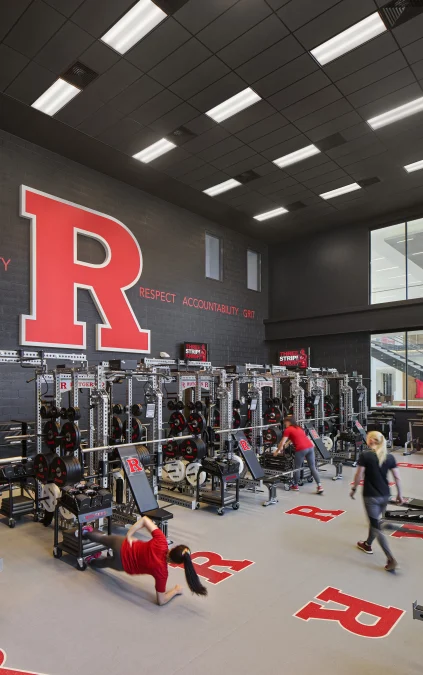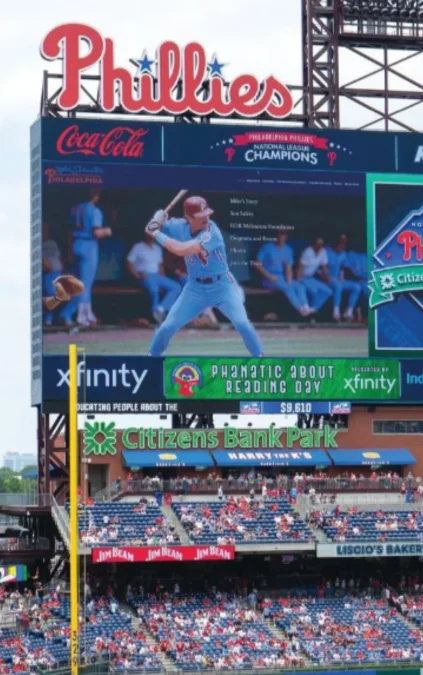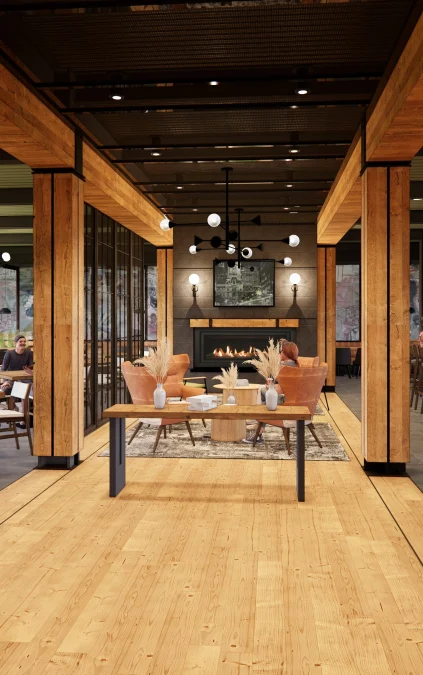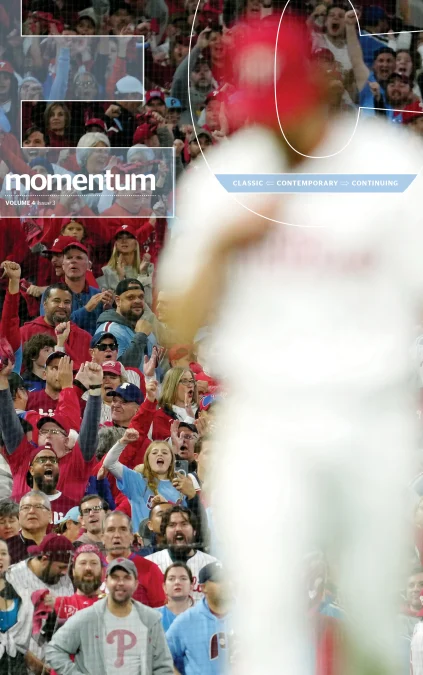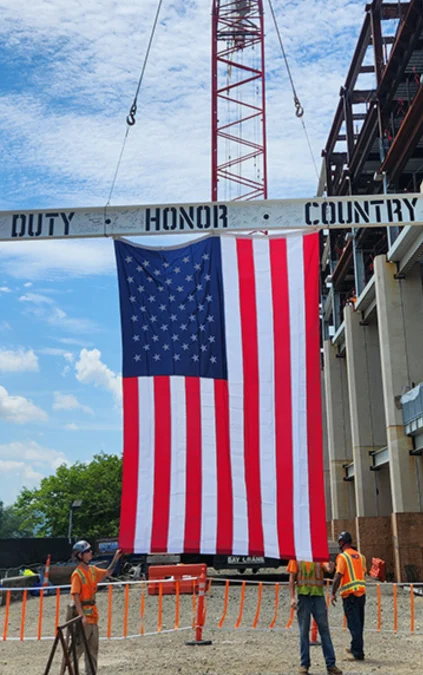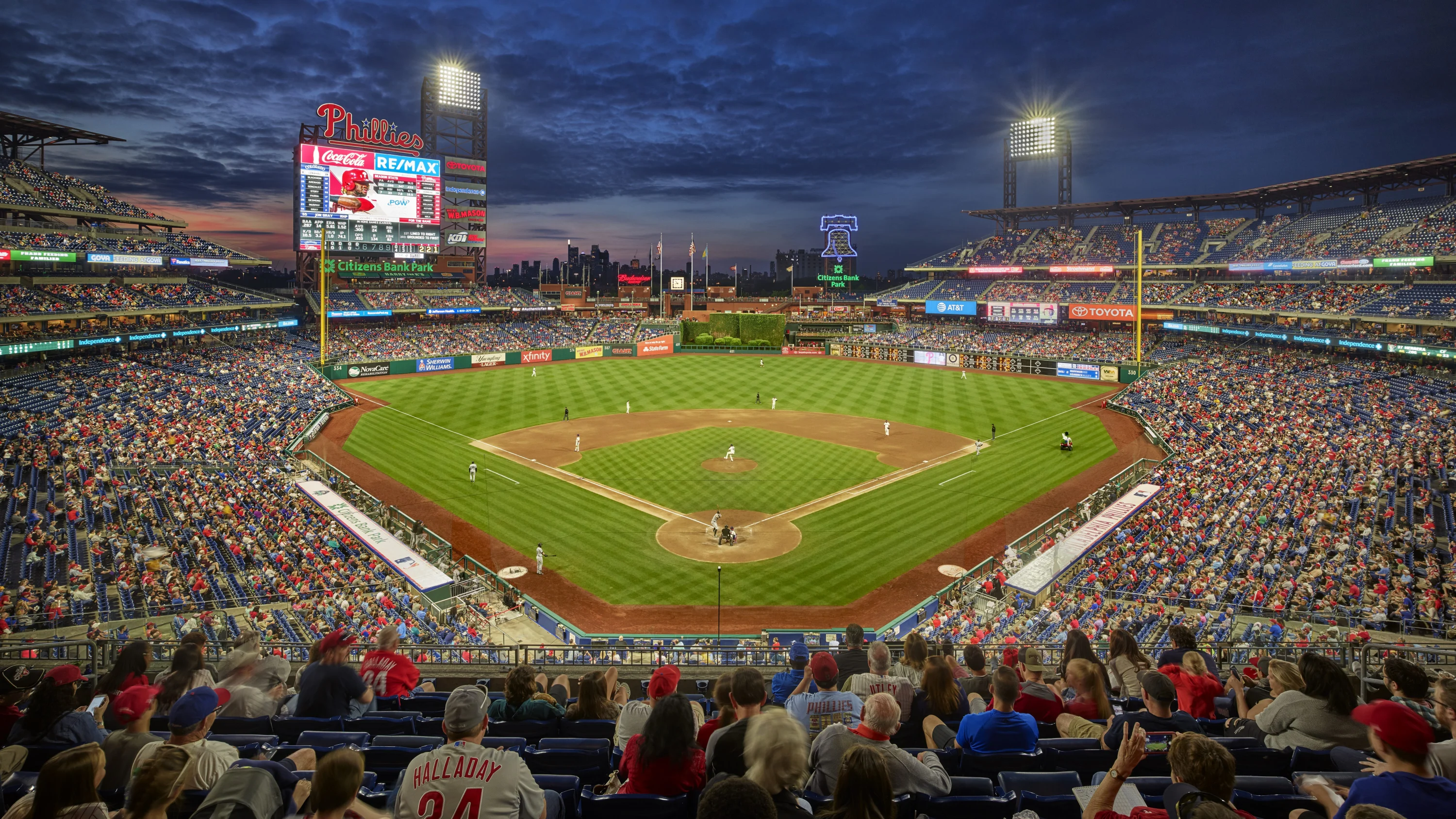
Designing a Home-Field Advantage
Insights
Bring on the Noise
This weekend, the Philadelphia Phillies begin their National League Division Series push with the comfort — and noise — of a home-field advantage. Few stadiums deliver October energy like Citizens Bank Park. The roar is deafening, the atmosphere electric, and the design itself helps turn a playoff game into an unforgettable shared experience.
A Ballpark Built for Fans
When Veterans Stadium closed after the 2003 season, the Phillies and EwingCole set out to create a true baseball park — one that felt intimate, easy to navigate, and alive with Philadelphia’s passion. Comfort and connection guided every decision.
“Whether you’re in a suite or the last row in the upper seating section, our goal was to make sure you could see the game no matter where you are in the stadium.”
– Robert McConnell, AIA, President, EwingCole.
The team wanted fans to feel the energy of the stadium from the moment they walked in. They wanted it to feel grand, as if you’re stepping directly onto the field as you cut across the concourse to your seat. To achieve this, the team buried the playing field 23 feet below street level, allowing fans entering through the main gates to see straight through to the diamond. Concession stands and structural elements were pushed back to keep sightlines clear along the concourses. The result: you can grab a drink, find a snack, and never lose track of the action.
Architectural critic Inga Saffron described the space as having “the sociability of an ongoing block party,” where fans on the move remain visually tied to the game while circling the concourse.
Every Seat is in Play
To ensure no obstructed views, the first line of supporting columns sits behind the furthest seats in the lower bowl. This created cantilevered decks for suites and upper levels, allowing nearly half of the stadium’s 42,901 seats to sit at field level — an engineering feat that keeps fans close to the action.
“The architects managed to put half of the park’s 43,000 seats at field level — a truly astonishing achievement.”
– Inga Saffron, Architecture Critic, Philadelphia Inquirer
Evolving Without Losing Its Soul
Since 2004, the park has continued to evolve. In 2018 and 2019, EwingCole and its collaborators introduced smart upgrades that enriched the fan experience while enhancing the park’s character.
Families gained The Yard, a kid-friendly mini ballpark with games and soft-serve in miniature batting helmets. The Phillies’ history took center stage with an expanded Wall of Fame and displays of retired numbers. Social spaces were refreshed and designed to feel modern and photo-ready.
“There wasn’t really a need to do anything drastic or dramatic. The improvements were targeted — focused on areas that could benefit from being more modern and creating Instagrammable moments that didn’t exist in 2004.”
– Kevin Murphy, RA, Principal, EwingCole
Food That Feels Like Philly
Good food isn’t an afterthought here — it’s part of the design. Ashburn Alley, located in center field, showcases local flavors, from cheesesteaks to craft beer. Bull’s BBQ found a larger home in left field to feed hungry crowds. Pass and Stow, a lively social spot with an outdoor bar and firepits, transformed what was once a pass-through plaza into a true hangout before and after games.
“The original concept was to get everyone off the street and to a view of the field as fast as possible. In 2019, we rethought that idea and created more of a destination.”
– Kevin Murphy, RA, Principal, EwingCole
Modern Upgrades for a More Electric Vibe
Behind the scenes, the park remains current. Energy-efficient LED lighting now brightens the field while cutting power use in half. And the new PhanaVision scoreboard — installed in 2023 — is 77 percent larger than its predecessor, at 152 feet wide and 86 feet tall. It’s big enough to fit 516 life-size Phillie Phanatics.
In 2025, EwingCole engineers designed an electrical distribution upgrade for the park to power approximately 2300 linear feet of new ribbon boards which surround the stadium. These upgrades were fortuitous, as they are powerful enough to support Phillies newest closing pitcher, Jhoan Duran’s infamous, fiery walkout display.
Twenty Years of Loud, Loyal Baseball
Since opening day in 2004, Citizens Bank Park has been an integral part of the Phillies’ story. It’s hosted sellout streaks, pennant runs, and moments etched into baseball lore, from Brad Lidge’s 2008 World Series-clinching strikeout to Bryce Harper’s “Bedlam at the Bank” home run in 2022.
Two decades on, the park still feels fresh and fiercely Philadelphia — intimate, loud, and built for fans who want to stay close to the game. Earlier this year, USA Today readers voted Citizens Bank Park the best MLB stadium in 2025 in their annual 10Best Readers’ Choice Awards. As October baseball returns to South Philly, its design remains one of the Phillies’ quietest but most powerful advantages.
Editor’s Note: This article largely originates from a previously published issue of EwingCole’s Momentum in 2024, marking the 20th anniversary of Citizens Bank Park. It has been updated for the 2025 postseason as the Phillies begin their National League Division Series run.


